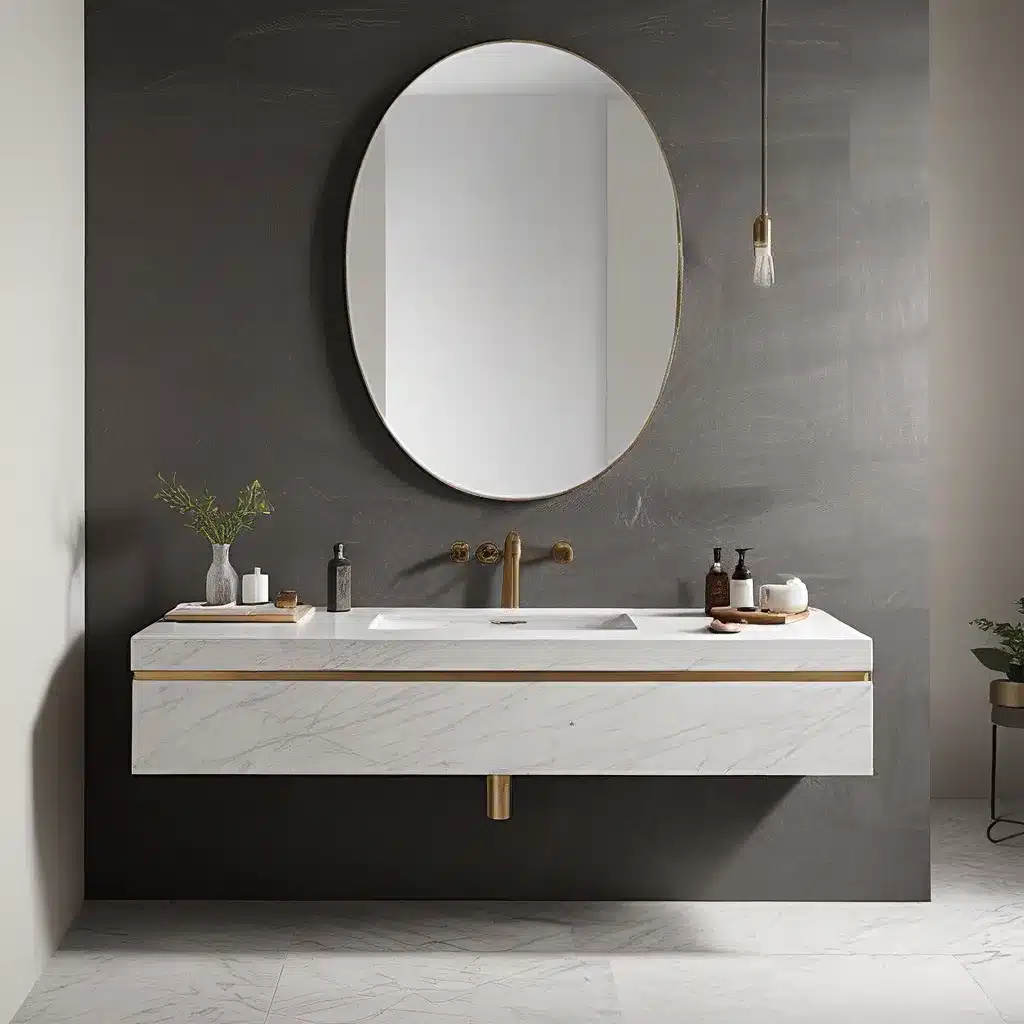
In the ever-evolving world of bathroom design, the humble washbasin has emerged as a true centerpiece, transcending its utilitarian roots to become a statement of style and function. Gone are the days of simple sinks relegated to the periphery; today’s innovative washbasin designs are captivating homeowners and designers alike, transforming the bathroom into a sanctuary of relaxation and self-expression.
The Rise of Aesthetic Bathrooms
The bathroom is no longer just a functional space; it has become a canvas for personal expression. Homeowners and designers are embracing the notion that bathrooms can be as visually appealing as they are practical, with a focus on color schemes, lighting, and material selections that elevate the overall aesthetic.
Traditionally, bathrooms were designed with a focus on functionality, emphasizing practicality over aesthetics. However, the modern homeowner seeks more than just a functional space; they desire a bathroom that reflects their personal style and provides a serene retreat.
This shift in perspective has led to the emergence of aesthetic bathrooms, where design elements such as color, lighting, and materials are strategically employed to create a visually appealing and harmonious environment. Neutral tones like whites, grays, and earthy hues are popular choices for creating a calm and sophisticated ambiance, while accents of bold colors or intricate patterns in accessories, tiles, or wallpapers can add character without overwhelming the space.
Washbasin as a Focal Point
At the heart of this aesthetic revolution is the washbasin, which has become a true focal point in modern bathroom design. Traditional fixtures are being reimagined, and innovative washbasin designs are taking center stage, offering homeowners and designers a wealth of options to personalize their bathrooms.
Freestanding sinks, often crafted from materials like glass or ceramic, create a sense of openness and add a sculptural element to the space. Wall-mounted faucets not only save counter space but also contribute to a sleek and contemporary look, while unique showerheads and rain shower systems transform the once purely functional shower into a spa-like experience.
Tiles play a crucial role in defining the aesthetic of a bathroom, and homeowners are embracing bold colors, geometric patterns, and textured tiles to create eye-catching focal points. Large-format tiles are a current trend, giving the bathroom a clean and expansive feel, while hexagonal and herringbone patterns add visual interest to walls and floors.
Balancing Aesthetics and Accessibility
As the aesthetic appeal of bathrooms has become increasingly important, the need for accessibility has not been overlooked. Innovative bathroom designs strive to strike a balance between visual appeal and practical functionality, ensuring that the space is inclusive and accommodating for users of all ages and abilities.
Universal design principles are gaining traction in the realm of bathroom design, emphasizing the creation of spaces that can be comfortably used by everyone, regardless of their physical abilities. Lever-style faucet handles, grab bars that double as towel racks, and curbless showers are just a few examples of features that seamlessly integrate accessibility into the overall design.
The integration of smart technology has further revolutionized bathroom design, adding a layer of convenience and luxury. Smart toilets with heated seats, built-in bidets, and customizable settings have become popular additions to high-end bathrooms, while motion-activated faucets and lighting contribute to a futuristic aesthetic and enhanced accessibility for users with mobility challenges.
Designing for a Spa-like Retreat
The evolution of bathroom design has also seen a shift towards creating spa-like retreats within the home. Homeowners are transforming their bathrooms into personal sanctuaries for relaxation and self-care, incorporating design elements that evoke a sense of tranquility and rejuvenation.
The incorporation of natural materials such as bamboo or teak in vanities and shelving adds warmth and a touch of nature, while the use of aromatherapy through scented candles, essential oil diffusers, or shower steam systems enhances the sensory experience, promoting relaxation and stress relief.
Large frameless mirrors create an illusion of space and reflect light, contributing to an airy and tranquil atmosphere, while heated flooring, towel warmers, and heated towel racks add a layer of comfort, making the bathroom a cozy haven.
Embracing the Future of Bathroom Design
The evolution of washbasin design and bathroom design, in general, has transcended traditional norms, ushering in an era where aesthetics and accessibility coexist harmoniously. Homeowners and designers are no longer constrained by the utilitarian view of bathrooms but are instead embracing creativity and innovation to craft spaces that cater to both visual appeal and practical functionality.
From the rise of aesthetic bathrooms that prioritize design elements like color, lighting, and materials to the incorporation of universal design principles that make spaces accessible to users of all abilities, the modern bathroom has become a canvas for expression and inclusivity. The intersection of smart technology, spa-like retreat concepts, and case studies showcasing successful implementations all contribute to a holistic understanding of the possibilities within this evolving realm of design.
As we continue to push the boundaries of conventional thinking, the future of accessible bathroom design holds exciting prospects. The marriage of aesthetics and accessibility is not merely a trend but a fundamental shift in perspective, redefining bathrooms as spaces that blend beauty with functionality, catering to the diverse needs and desires of users. Whether you’re a homeowner, interior designer, or contractor, embracing this evolution in washbasin and bathroom design can elevate your personal or professional projects to new heights of style and functionality.

